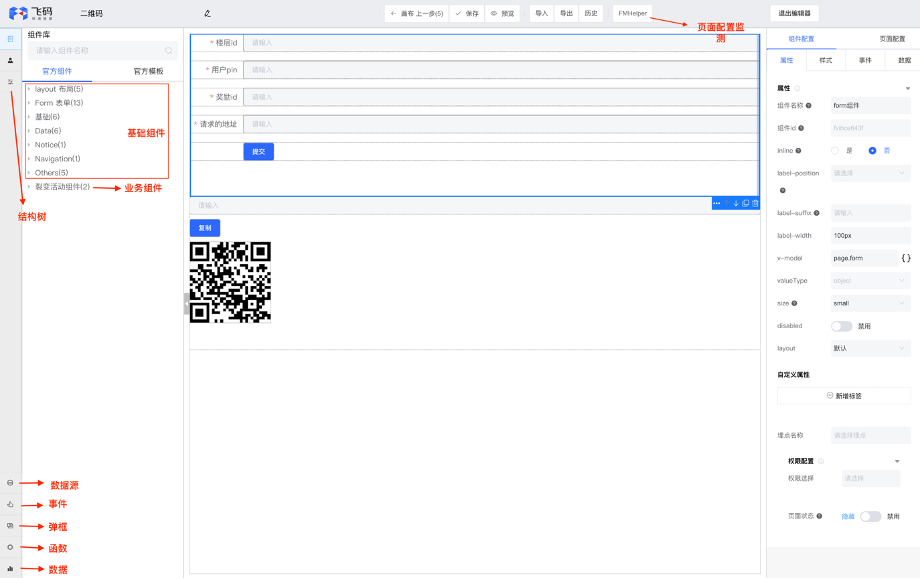介绍
ECMAScript 6 新增的 Set 是一种新集合类型,为这门语言带来集合数据结构。Set 在很多方面都像是加强的 Map,这是因为它们的大多数 API 和行为都是共有的。
基本API
1. 创建Set实例
使用 new 关键字和 Set 构造函数可以创建一个空集合:
const s = new Set();
如果想在创建的同时初始化实例,则可以给 Set 构造函数传入一个可迭代对象,其中需要包含插入到新集合实例中的元素(Set 可以包含任何 JavaScript 数据类型作为值):
const s = new Set(["val1", 1, true, {}, undefined, function fun() {}]);
注意:Set结构不会添加重复的值
const s = new Set([1, 1, 2, 3, 4, 4, 5, 6, 7, 4, 2, 1]); Array.from(s); // [1, 2, 3, 4, 5, 6, 7]
经常用Set解决数组去重问题
const arr = [1, 2, 3, 3, 4, 5, 4, 4, 2, 1, 3]; Array.from(new Set(arr)); // [1, 2, 3, 4, 5]
2. Set实例转数组
const s = new Set([1, 2, 3]); Array.from(s); // [1, 2, 3]
3. size属性
size: 获取Set实例的元素个数:
const s = new Set([1, 2, 3]); s.size; // 3
4. add()
add(): 添加元素:
const s = new Set(); s.add(1).add(2).add(3); Array.from(s); // [1, 2, 3]
5. has()
has(): 查询Set实例是否存在某元素(返回布尔值):
const s = new Set(); s.add(1).add(2).add(3); s.has(1); // true
6. delete()
delete(): 删除Set实例中某个元素(返回布尔值):
const s = new Set(); s.add(1).add(2); s.delete(1); Array.from(s); // [2]
7. clear()
clear(): 清空Set实例:
const s = new Set(); s.add(1).add(2).add(3); Array.from(s); // [1, 2, 3] s.clear(); Array.from(s); // []
8. 迭代
keys():返回键名;
values(): 返回键值;
entries(): 返回键值对;
键名=键值
const s = new Set(); s.add(1).add(2).add(3); Array.from(s.keys()); // [1, 2, 3] Array.from(s.values()); // [1, 2, 3] Array.from(s.entries()); // [[1, 1], [2, 2], [3, 3]]
for-of:
const s = new Set();
s.add(1).add(2).add(3);
for (const i of s) {
console.log(i);
}
// 1
// 2
// 3
forEach
const s = new Set(); s.add(1).add(2).add(3); s.forEach((value, key) => console.log(key + ' : ' + value)); // 1 : 1 // 2 : 2 // 3 : 3
补充:JS中Set的操作方法
(1):数组与Set之间的转换:
一:数组转Set:
var arr = ["1","2","1","2","3","1"];
var set = new Set(arr);
//得到一个新的Set:{"1","2","3"};
二:Set转数组:
var arr1= Array.from(set );
//得到一个新的数组:["1","2","3"];
(2):使用Set给数组去重:
//定义一个新的数组:
var arr = ["1","2","1","2","3","1"];
方法一:
var arr1 = Array.from(new Set(arr));
//得到一个新的数组:["1","2","3"];
方法二:
var arr1 = [...new Set(arr)];
//得到一个新的数组:["1","2","3"];
(3):求两个Set的并集,交集,差集:
var arr1 = ["1","2","3"];
var arr2 = ["1","2"];
var set1= new Set(arr1);
var set2= new Set(arr2);
//并集后:
var newSet1 = new Set([...set1,...set2]);
//得到一个新的Set:{"1","2","3"};
//交集后:
var newSet2 = new Set([...set1].filter(x => set2.has(x)));
//得到一个新的Set:{"1", "2"};
//差集后:
var newSet3 = new Set([...set1].filter(x => !set2.has(x)));
//得到一个新的Set:{"3"};至此,在JS中使用Set的使用方法暂时写到这儿,以后想起来再更新。
总结
原文地址:https://blog.csdn.net/weixin_45112114/article/details/123231261
版权声明:除特别声明外,本站所有文章皆是本站原创,转载请以超链接形式注明出处!







